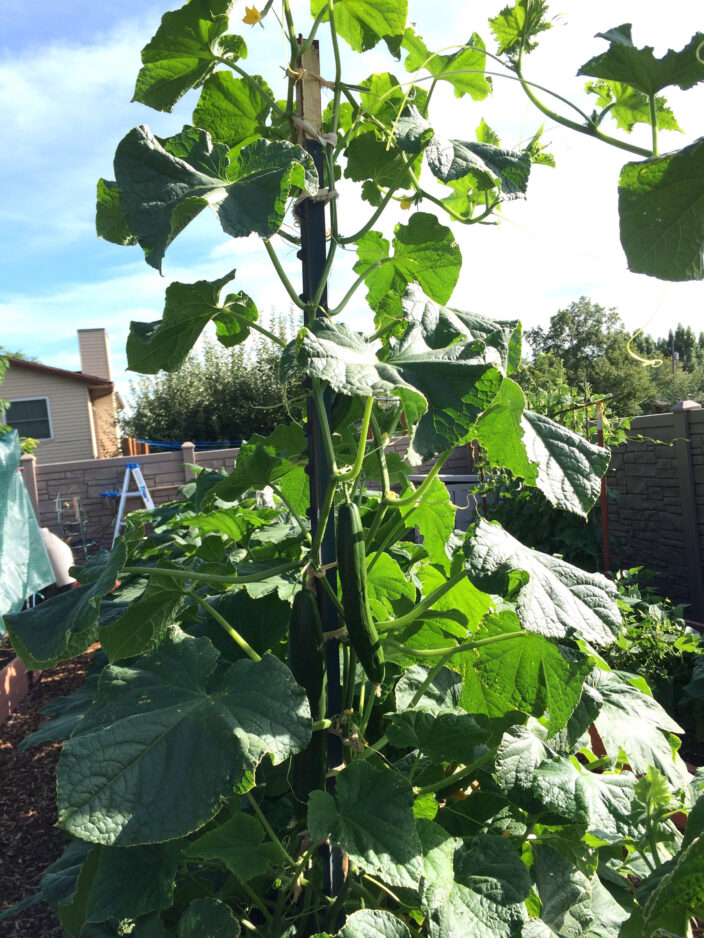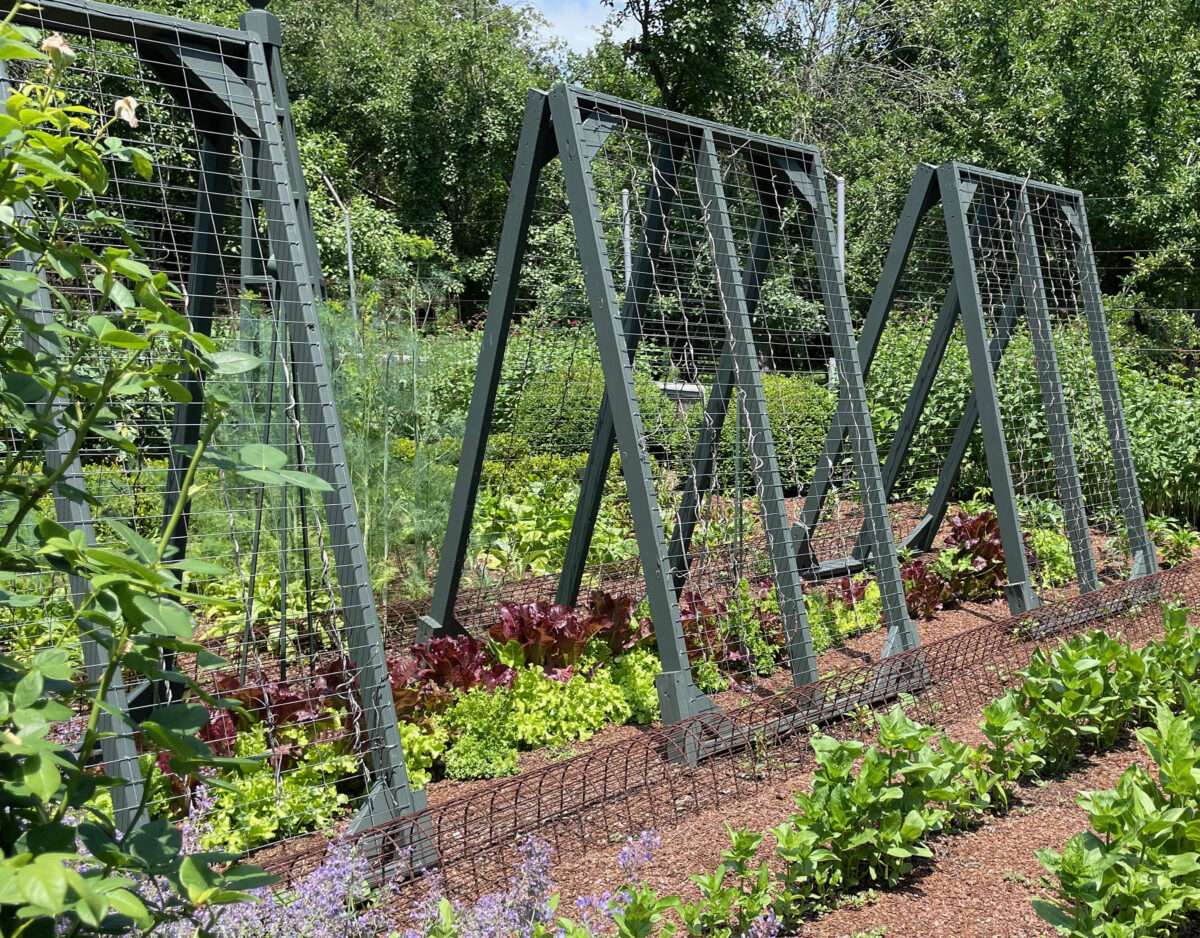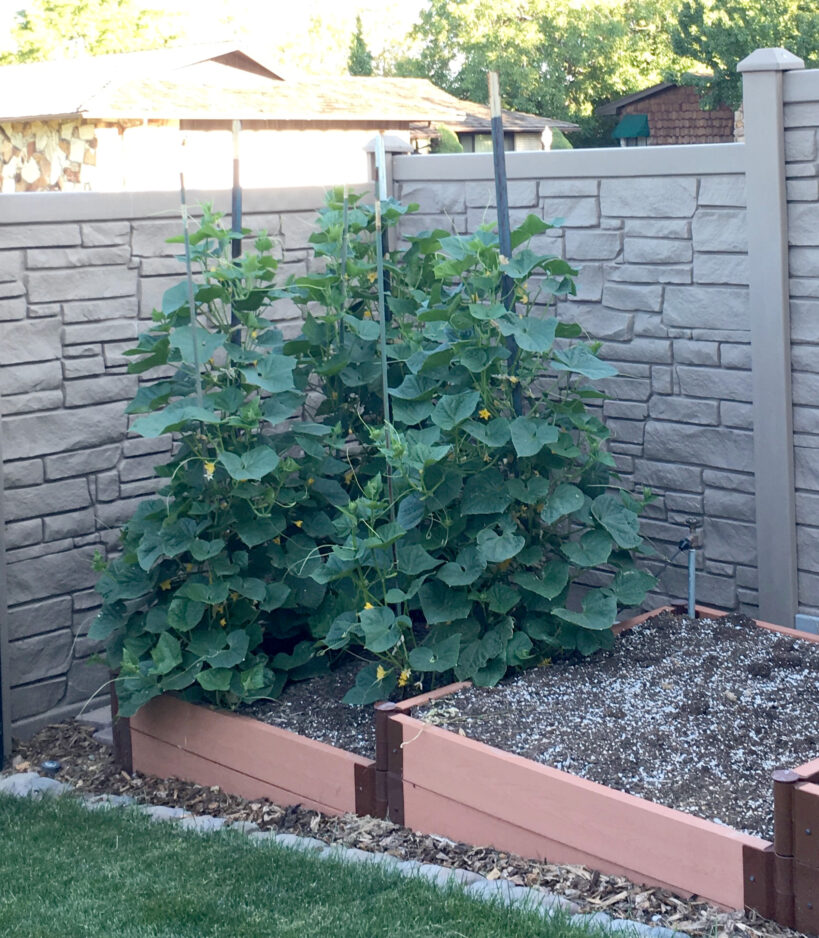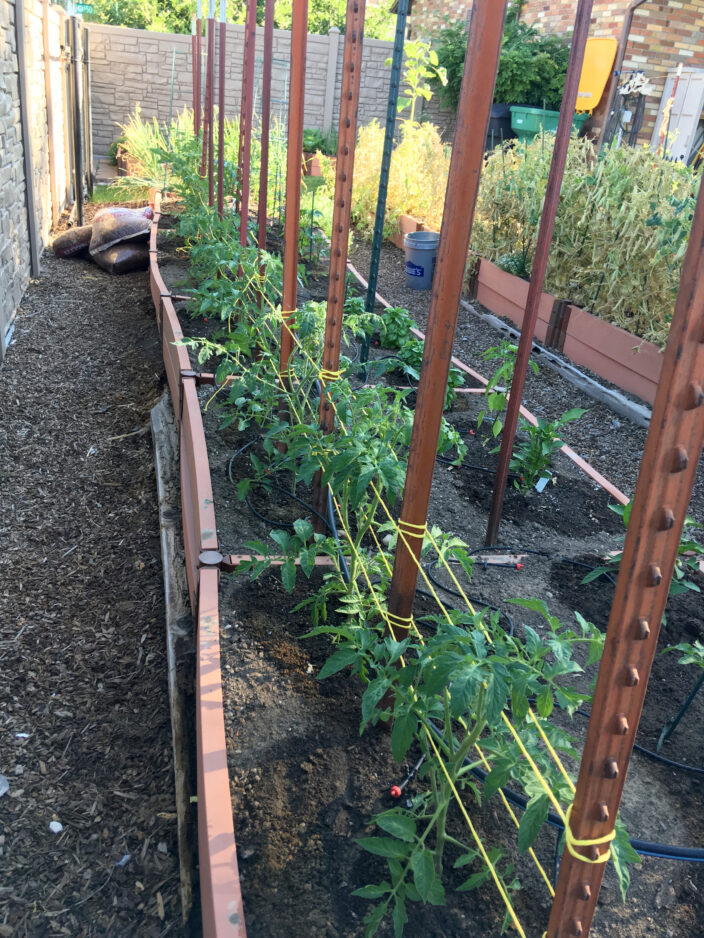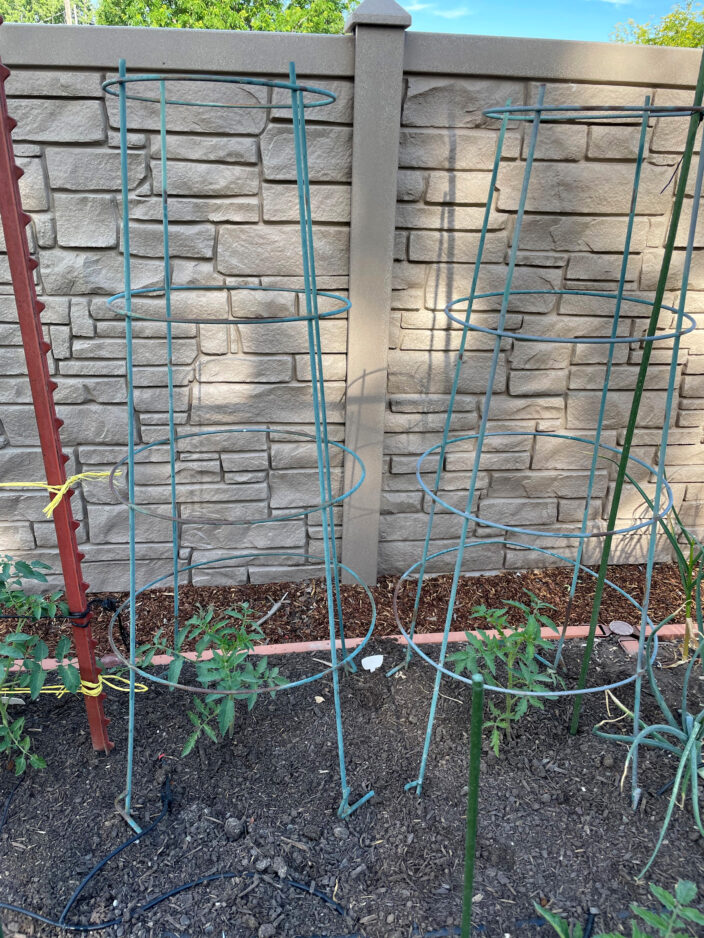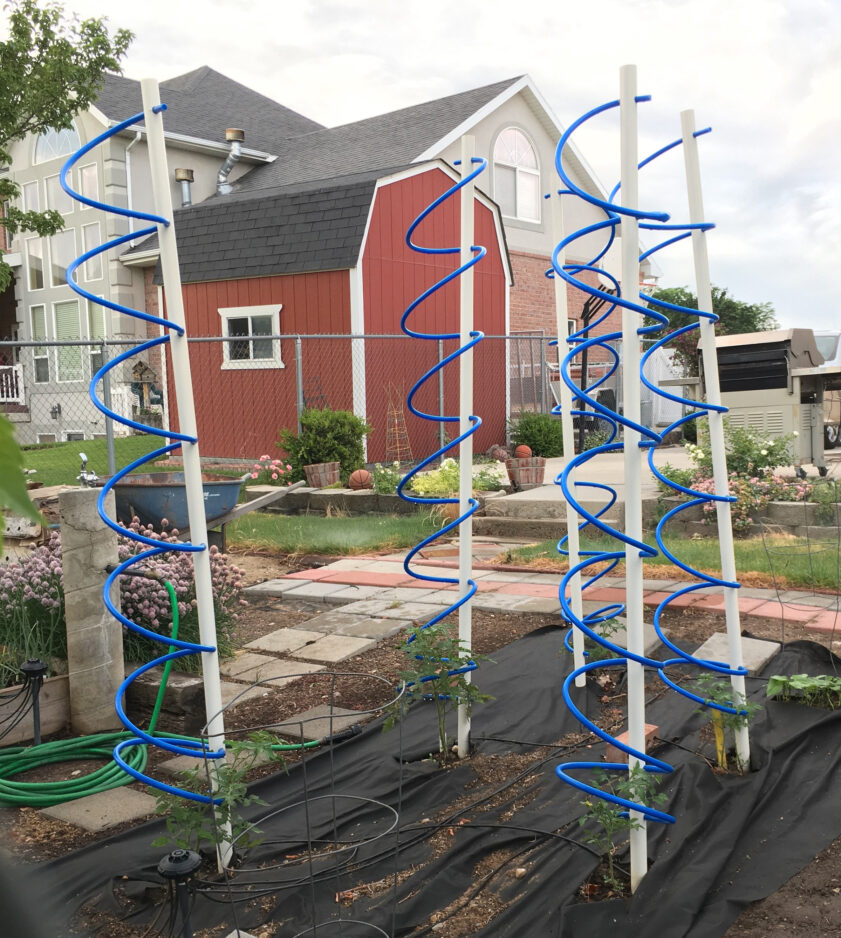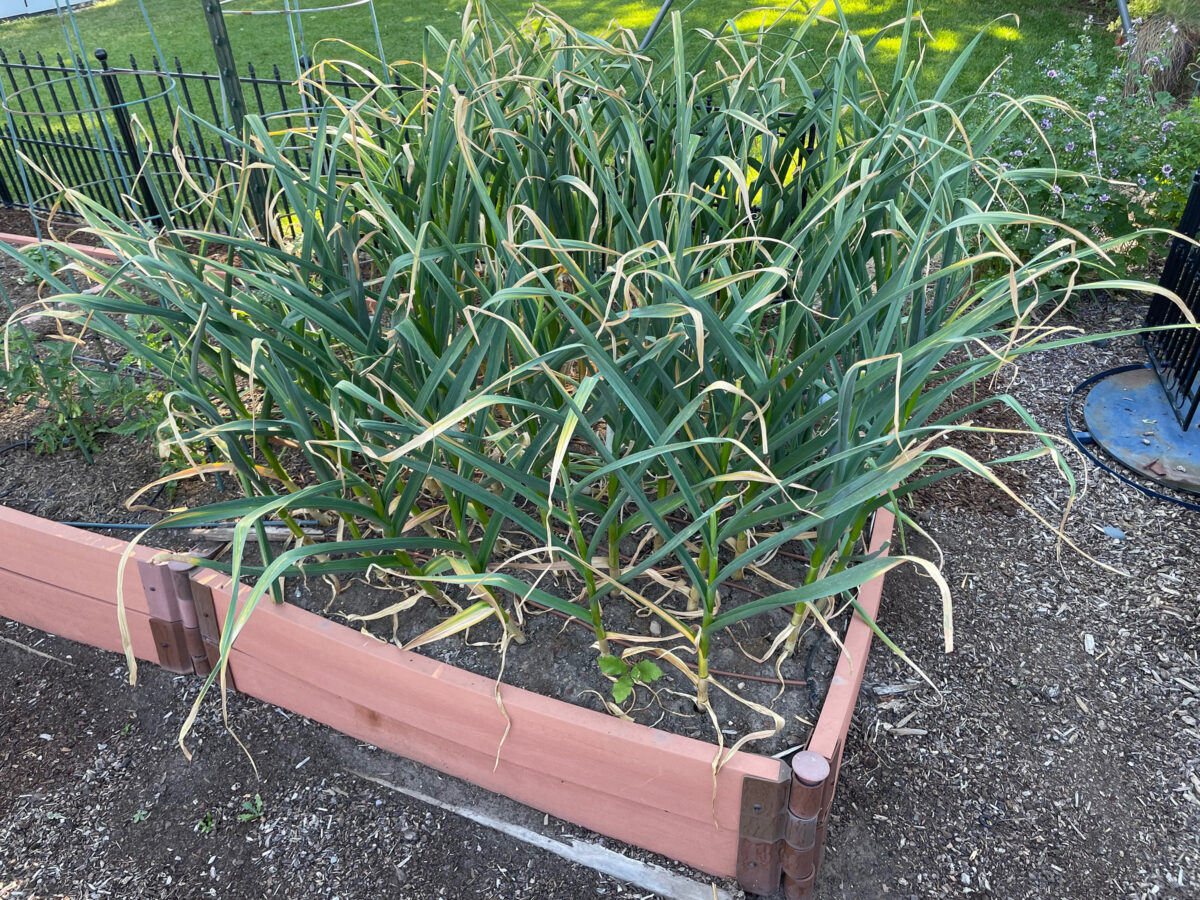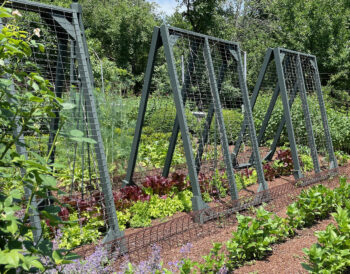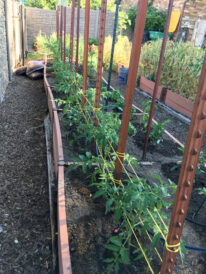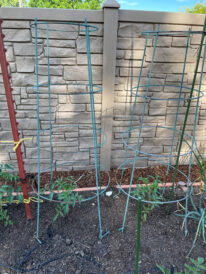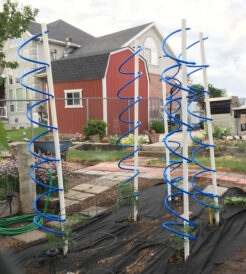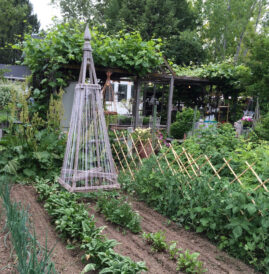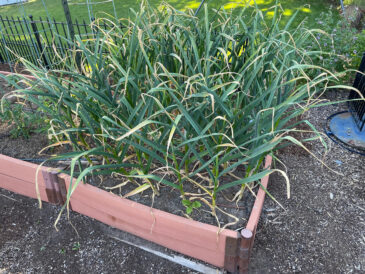Garden Help Desk: Vertical gardening can be a good choice for many gardens
- A simple steel T-post is strong enough to support a large plant and durable enough to last for many years.
- Plant supports can be as simple as netting on a fence or as sturdy as these lumber and welded-wire fencing trellisses.
- With steel posts supporting these cucumber plants, all four fit into a 4-foot-by-4-foot bed.
- Supporting these tomato plants with heavy twine between steel posts will leave room along the other half of the bed for more plants.
- Choose sturdy supports for your plants. These heavy-duty tomato cages won’t tip or bend under the weight of a mature tomato plant.
- There are many creative, do-it-yourself ways to encourage vining plants to grow vertically.
- This obelisk will support pole beans as they circle their way up the twine.
- When garlic leaves start to yellow and dry, it’s time to cut back on the watering and get ready to harvest.
There are some garden veggies that require some vertical support — pole beans and indeterminate tomatoes, for example — but there are also other vegetable crops that do well with vertical gardening. If you haven’t tried vertical gardening yet — securing vining vegetables like winter squash, cucumbers, tall tomatoes, melons, etc., in tall cages or to posts or trellises — here are some reasons why it might be a good choice for your garden.
Vertical gardening makes it easier to keep the garden clean. It not only keeps stems, leaves and fruits up off the soil, it also makes it easier to keep old leaves and other plant debris cleared out from under the plants.
Keeping fruits up off the soil may reduce the risk of contamination in gardens that are watered with untreated water. If this is your goal, you’ll also need to water with drip irrigation and prevent overspray from nearby lawn sprinklers.
It’s easier to harvest in a vertical garden. Squash, tomatoes, melons and cucumbers are up higher, so they’re easier to see, plus you’ll be doing less bending and stooping.
Vertical gardening methods use fewer square feet of garden space per plant. Growing squash, tomatoes, melons and cucumbers vertically instead of letting them sprawl across the garden will free up garden space.
With a cleaner area under your plants and fruits kept up off the soil, you’ll also reduce damage from sow bugs, earwigs, slugs and snails.
If you decide you want to give vertical gardening a try, keep the following tips in mind.
Use sturdy stakes or other supports. Your plants are still on the smaller side now, but as they grow and set fruit, they’ll get quite heavy. You want your stakes and plants to stay upright, even on windy days. If you’re using netting, make sure it’s secured to a sturdy frame.
Use strong, soft materials if you’re tying your plants to posts or stakes. Wire and thin twine can damage stems; your plants will do better if they’re secured with strips of repurposed fabric or wide, soft plastic ties.
The tips of our garlic leaves are turning yellow. Is it time to harvest?
July is the time of year when most garlic is ready to harvest. Your garlic leaves are probably yellowing because the plants are mature and ready to harvest. Just like onions and shallots, garlic leaves begin to yellow when the garlic is mature, but unlike onions and shallots, hard-neck garlic plants don’t tip over as they yellow and dry.
Cut back on watering if the leaves have started to yellow. Let the ends of the leaves begin to dry out and then harvest the bulbs before the tops of the plants are completely dried down.
When you’re ready to harvest your garlic, don’t try to just pull the garlic out of the soil. Instead, carefully loosen or lift the bulbs with a spading fork or shovel so you can remove the entire plant without breaking off the tops.
Brush off any loose soil and put the garlic in a well-ventilated place where they’ll be protected from direct sun and rain or irrigation. Wait until the tops are dry, the outer “skins” are papery and the roots are dry, about one to two weeks, and then brush away any remaining soil. The tops of soft neck garlic bulbs can be braided together or cut off. The tops of hard neck garlic should be cut off, leaving a 1- to 2-inch stub.
Store your cured garlic in a cold, dry place with good air circulation but not where the garlic might freeze. A mesh bag or open basket are good options for bulbs that aren’t braided. Garlic will only hold it’s quality for a month or two in a cool location, but it will keep its best quality for longer if stored in a colder location, so only bring a few heads of garlic at a time out of cold storage and into your pantry.

